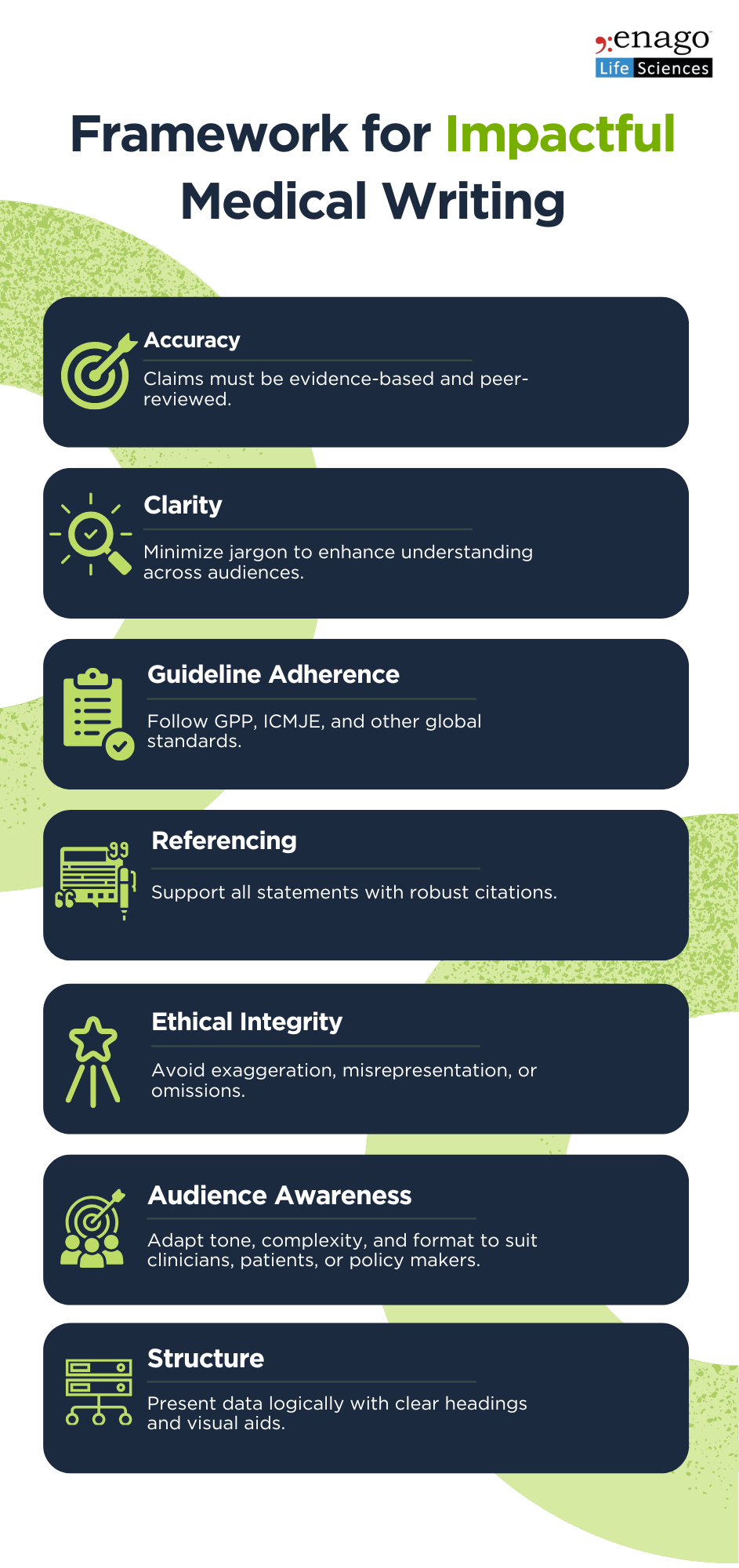Medical communication in 2025 stands at a pivotal crossroads, defined by tightening ethical standards, rapid digital transformation, and the need to deliver scientifically accurate yet accessible information. For life science organizations, compliance is the foundation for patient trust, safety, and business success.
The Heightened Regulatory Landscape and Its Impact
Global regulators continue to impose stricter standards to ensure transparency and data protection. For instance, the updated HIPAA Security Rule now mandates multi-factor authentication and regular penetration testing, reflecting the critical role of cybersecurity. About 84% healthcare organizations in the Asia-Pacific region have boosted their compliance budgets, highlighting an urgent need to strengthen how they manage regulations and risks. Organizations must align with evolving frameworks, ensuring content remains rigorously referenced and ethically sound.
Navigating Regional Regulatory Differences
While global harmonization efforts such as ICH guidelines set broad standards, regional regulatory frameworks introduce nuances that significantly shape medical communication. In the United States, the FDA emphasizes transparency and plain language for patient-facing content, aligning with its increased focus on health equity in communications. The European Medicines Agency (EMA) similarly prioritizes patient-centricity, requiring plain-language summaries of clinical trials, but places additional emphasis on multilingual accessibility across EU member states.
In Asia-Pacific, the diversity of regulatory bodies means communication must balance international harmonization with local requirements. For example, Japan’s PMDA demands rigorous data contextualization within its unique clinical landscape, while health authorities in India and China increasingly mandate digital submissions aligned with global data standards.
The Middle East and Africa are rapidly strengthening frameworks, underscored by WHO EMRO’s guidelines that emphasize informed consent, trial registration, and ethical publication practices. In these regions, local cultural considerations often intersect with regulatory expectations, requiring nuanced adaptation of clinical communications to ensure clarity and trust.
Addressing these regional differences not only minimizes compliance risks but also ensures that communication strategies remain globally relevant yet locally resonant, advancing both scientific transparency and patient engagement.
Framework for Impactful Medical Writing
To balance compliance with communication impact, medical writers can draw from the following framework
Types of Medical Writing and Common Challenges
Each form of medical writing carries its own compliance challenges, demanding tailored strategies to ensure accuracy, clarity, and ethical adherence.
| Type | Examples | Core Challenges |
| Clinical & Regulatory | Protocols, FDA/EMA submissions | Stringent accuracy, ethical compliance |
| Manuscripts & Reviews | Journal articles, reviews | Avoiding bias, plagiarism, ensuring transparency |
| Medical Education | CME materials, patient leaflets | Adapting for health literacy, plain language use |
| Health Economics | Cost-effectiveness reports | Balancing rigor with accessible communication |
| Science Communication | Press releases, conference talks | Translating technical data without oversimplifying |
Across all types, key challenges include guideline changes, authorship disputes, maintaining objectivity, and real-time integration of regulatory updates.
Audience-Centered Communication: Precision and Accessibility
Communication must serve diverse stakeholders while meeting regulatory expectations. Clinicians require detailed, data-driven content, while patients benefit from plain-language summaries and visuals. With 88% of adults having limited health literacy, plain language is vital for informed decision-making and improved outcomes.
Ethical Best Practices
Writers act as custodians of public trust. Ethical frameworks like the AMWA Code of Ethics and ICMJE criteria demand rigor, transparency, and accountability. Cornerstones include:
- Scientific objectivity and fair balance.
- Proper authorship credit.
- Full disclosure of conflicts of interest.
- Refusal to participate in unethical practices.
The WHO EMRO guidelines further underscore the importance of informed consent, confidentiality, trial registration, and sanctions for misconduct like plagiarism or duplicate publication.
Digital Transformation Powers Compliance and Impact
AI, automation, and analytics are transforming medical communications. They streamline compliance checks, reduce audit risks, and adapt content dynamically to regulatory and audience feedback. The United States medical writing market was valued at approximately USD 1.09 billion in 2024, and is projected to expand at a CAGR of around 10.0% from 2025 to 2034, reaching an estimated valuation of USD 2.83 billion by 2034. This growth reflects increasing drug development activities, stringent regulatory requirements, and a rising emphasis on high-quality, compliant medical communication across clinical, regulatory, and scientific domains.
Sustainable Compliance Protocols
Organizations can build trust and efficiency by embedding compliance into every stage of communication:
- Foster early cross-functional collaboration among regulatory, medical affairs, and legal teams.
- Employ trained regulatory writers versed in global standards.
- Maintain meticulous documentation and version control.
- Leverage digital platforms and visual communication tools to enhance bothclarity and engagement.
- Provide ongoing training to ensure teams stay updated on evolving guidelines.
Ethical, compliant communication reduces costly delays, accelerates approvals, and ensures patients access breakthrough therapies sooner. Companies that combine regulatory agility with digital sophistication set themselves apart delivering business growth while strengthening trust and advancing patient care.
Author:

Rebecca D’souza, PhD.
Associate Content Expert, Enago Academy
Connect with Rebecca on LinkedIn

